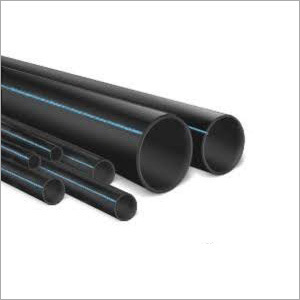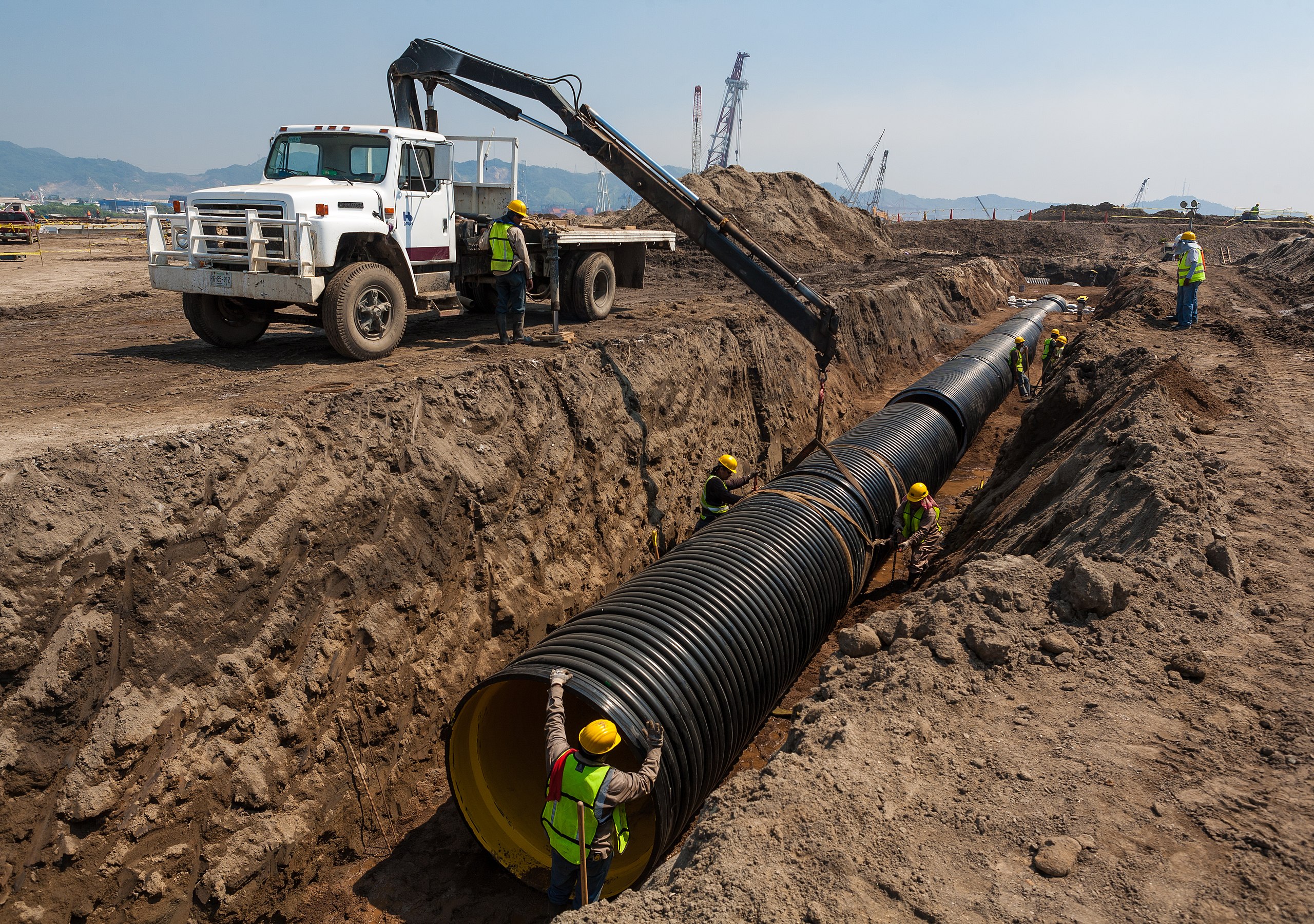How to Use hdpe pipe fittings Midland TX for Reduced Maintenance
Explore the Manufacturing Process Behind High-Quality HDPE Pipeline and Its Applications
The production process of high-grade HDPE pipelines is detailed and systematic. It starts with the option of raw materials that boost efficiency. Following this, ethylene undertakes polymerization to create material, which is after that shaped with extrusion. Quality assurance is critical, making certain that the last item meets rigid criteria. Nevertheless, the trip of HDPE pipes does not end with manufacturing. Their applications throughout various sectors expose a broader importance worth examining.
Comprehending HDPE: Features and Advantages

High-density polyethylene (HDPE) is a versatile polycarbonate known for its sturdiness and resistance to numerous ecological aspects. This material displays superb tensile stamina, making it suitable for requiring applications. Its low-density framework adds to a light-weight product, assisting in convenience of dealing with and installment. HDPE likewise showcases impressive resistance to chemicals, which minimizes deterioration when revealed to harsh substances.
The product's reduced wetness absorption better improves its long life, making it optimal for usage in pipelines and storage containers. In addition, HDPE is resistant to ultraviolet (UV) radiation, guaranteeing that items preserve their stability also when subjected to sunlight. Additionally, its versatility enables the development of elaborate forms without endangering stamina. The environment-friendly nature of HDPE, often stemmed from recycled materials, includes in its charm, advertising lasting techniques in manufacturing. On the whole, these residential or commercial properties and benefits make HDPE a preferred option for various industrial and customer applications.
Basic Material Selection for HDPE Manufacturing
The selection of raw materials for HDPE manufacturing is important to confirm the end product meets the wanted specs and top quality criteria. High-density polyethylene (HDPE) is mainly generated from polymerized ethylene, stemmed from fossil gas such as gas or unrefined oil. The high quality of these feedstocks significantly influences the mechanical and thermal properties of the final HDPE.
Ingredients additionally play a significant function in enhancing HDPE's efficiency, consisting of antioxidants, UV stabilizers, and colorants, which improve toughness and resistance to environmental elements. The option procedure should consider not only the chemical make-up of the raw products however additionally their handling features to ensure efficient manufacturing.
The sourcing of raw materials should prioritize sustainability and compliance with ecological regulations, as liable methods are necessary in today's market. Eventually, cautious basic material selection lays the foundation for generating top notch HDPE pipes suitable for varied applications.
The Extrusion Refine: Forming HDPE Pipeline
The extrusion procedure plays a crucial duty fit HDPE pipelines, beginning with thorough material prep work strategies that ensure optimal flow and consistency. Just as important is the layout of the die, which straight influences the final dimensions and surface area top quality of the pipeline. With each other, these variables add greatly to the effectiveness and quality of HDPE pipeline manufacturing.
Material Prep Work Techniques
Efficient manufacturing of HDPE pipes starts with thorough product prep work strategies, specifically the extrusion process. During this stage, high-density polyethylene material is very first dried to get rid of dampness, ensuring excellent circulation characteristics. The material is after that fed right into the extruder, where it undertakes home heating and melting, changing right into a thick state. This home heating procedure is very carefully regulated to preserve the product's honesty and efficiency. The liquified HDPE is forced via a die, forming it into a continuous pipeline form. Proper temperature monitoring throughout extrusion is crucial, as it straight impacts the product's buildings and the final item top quality. As soon as formed, the HDPE pipeline is cooled down and cut to specified lengths, prepared for succeeding processing and applications.
Die Design Significance
Accuracy in die design plays a necessary function in the extrusion procedure of HDPE pipelines. The die functions as the final shaping device, directly affecting the pipe's dimensions, wall surface density, and surface finish. A properly designed die warranties uniform material circulation, reducing problems such as abnormalities and weak points. The geometry of the die have to be optimized to suit the particular properties of HDPE, including its viscosity and thermal habits throughout extrusion. Additionally, the cooling rate of the product as it goes through the die can considerably impact the pipe's structural honesty. As a result, purchasing sophisticated die innovation is vital for suppliers intending to produce top notch HDPE pipes that meet market criteria and consumer assumptions.
High Quality Control Steps in HDPE Production
Numerous factors affect the high quality of HDPE pipe manufacturing, reliable high quality control steps are crucial to ensure consistency and reliability in the final item (custom hdpe pipe manufacturing Midland TX). Trick top quality control methods consist of extensive product assessment, confirming that the raw polyethylene fulfills recognized requirements for purity and thickness. During the extrusion process, specifications such as temperature level, pressure, and cooling time are carefully monitored to keep dimensional accuracy and structural integrity
Furthermore, post-production testing is check out this site necessary; suppliers commonly perform hydrostatic tests to analyze the pipeline's toughness and resistance to stress. Visual assessments for surface area issues additionally enhance high quality guarantee. Certification from pertinent requirements companies, like ASTM or ISO, gives an added layer of reliability. By carrying out these complete top quality control actions, suppliers can decrease defects, improve performance, and make certain that the HDPE pipelines satisfy the particular demands of different applications, eventually causing consumer contentment and rely on the item.
Applications of HDPE Pipe Across Industries
HDPE pipelines are made use of throughout numerous fields as a result of their toughness and versatility. In water circulation systems, they guarantee efficient shipment, while in wastewater administration, they supply dependable services for waste transportation. In addition, agricultural irrigation networks take advantage of HDPE's resistance to deterioration and flexibility, making it an optimal choice for modern farming practices.

Water Circulation Systems
A significant variety of sectors count on high-density polyethylene (HDPE) pipes for reliable water distribution systems. Understood for their sturdiness and resistance to corrosion, HDPE pipelines are extensively utilized in metropolitan water system networks, agricultural watering, and commercial applications. Their lightweight nature facilitates simple handling and installation, minimizing labor expenses and time. In addition, HDPE pipes can fit numerous stress degrees, making them ideal for both low and high-pressure systems. hdpe pipe suppliers Midland TX. The flexibility of the product enables for smooth combination right into existing infrastructure, lessening the requirement for considerable excavation. HDPE's resistance to chemical leaching assurances that the water supplied remains risk-free and clean, making it a suitable option for keeping the high quality of drinkable water across different industries.
Wastewater Monitoring Solutions
Effective water distribution systems additionally pave the method for cutting-edge wastewater administration solutions, where high-density polyethylene (HDPE) pipelines play a significant function. Distinguished for their sturdiness and resistance to rust, HDPE pipelines are ideal for carrying find wastewater in various setups. Their flexibility allows for very easy installment in complicated settings, lessening the demand for extensive excavation. In addition, HDPE's smooth interior surface area minimizes rubbing, improving flow prices and effectiveness. These pipelines are additionally resistant to chemical leaching, making sure that contaminants do not endanger the surrounding atmosphere. Industries, municipalities, and treatment centers increasingly rely upon HDPE pipelines for their integrity and durability, making them a preferred choice for contemporary wastewater monitoring systems. This versatility underscores the important value of HDPE pipelines across various applications.
Agricultural Irrigation Networks
Agricultural watering networks profit significantly from using high-density polyethylene (HDPE) pipes, which give reliable and reliable water shipment to crops. HDPE pipelines are lightweight, making them simple to move and mount, while their versatility enables for various configurations in varied surfaces. These pipelines show exceptional resistance to rust, chemicals, and UV radiation, making sure resilience in rough farming settings. Additionally, their smooth indoor surface reduces rubbing loss, maximizing water flow and reducing power costs connected with pumping. The longevity of HDPE pipelines, usually surpassing half a century, adds to lower upkeep and substitute expenditures. Farmers increasingly depend on HDPE pipelines to enhance irrigation efficiency and promote lasting agricultural methods, ultimately leading to improved crop yields and source preservation.

Future Patterns in HDPE Pipeline Modern Technology
As the demand for lasting and efficient infrastructure expands, improvements in HDPE pipeline technology are poised to transform numerous markets. Emerging patterns consist of the assimilation of smart modern technologies, such as sensors and IoT capabilities, which facilitate real-time tracking of pipe problems, decreasing maintenance costs and stopping leaks. Furthermore, the growth of advanced production methods, such as 3D printing, is enabling the manufacturing of facility, personalized pipe designs that deal with particular project needs.
Additionally, the concentrate on recycling and round economy practices is driving the development of HDPE pipes made from recycled products, improving sustainability. Improved jointing techniques, such as electro-fusion and mechanical fittings, are likewise enhancing installation performance and integrity. Lastly, the growing focus on ecological laws is pressing makers to take on greener production procedures, ensuring that HDPE pipelines not only fulfill market criteria but likewise cultivate an even more lasting future for infrastructure growth.
Regularly Asked Questions
Just How Does HDPE Contrast to Various Other Plastic Products?
HDPE outshines several other plastic materials regarding durability, chemical resistance, and versatility. Its reduced density and high tensile strength make it perfect for various applications, typically surpassing choices in both efficiency and durability.
What Are the Environmental Impacts of HDPE Manufacturing?
The ecological effects of HDPE manufacturing include greenhouse gas emissions, energy consumption, and prospective contamination from making procedures. Additionally, inappropriate disposal can result in dirt and water contamination, increasing issues regarding lasting ecological impacts.
Can HDPE Pipes Be Recycled?
Yes, HDPE pipelines can be recycled. Lots of facilities approve made use of HDPE for processing, transforming it right into brand-new main sewer line cleanout items. This recycling contributes to sustainability initiatives, reducing plastic waste while saving sources and power in the production cycle.
What Is the Life-span of HDPE Piping?

Just How Do Temperature Level Variants Influence HDPE Pipeline Performance?
Temperature level variations substantially influence HDPE pipeline efficiency, influencing versatility and strength. High temperatures can cause softening, while reduced temperature levels may create brittleness, ultimately influencing the pipe's durability and suitability for various applications in varied settings.